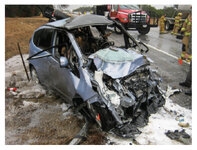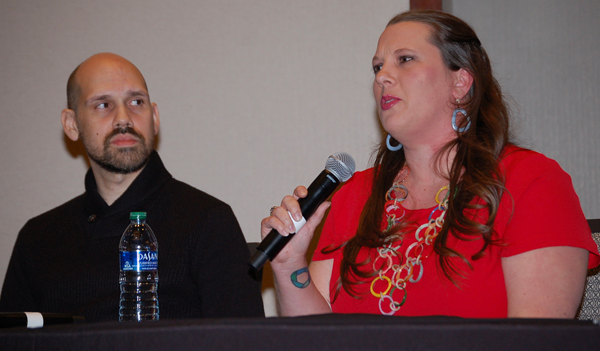Your comment is so misinformed and dangerous that I had to create an account.
Your comments are so fraught with fallacies and distractions almost not worth a single response other than to offer many clarifications to your ramblings.
The roof skin is a shear panel. It bolsters the side apertures. This fact is obvious to anyone who’s ever read a workshop manual and seen how strictly the replacement of a roof is outlined and how many different joining processes are used, sometimes on the same vehicle: adhesive here, urethane there, MIG brazing there, lots of STRSW, et cetera.
The first sentences is just incredible in it's misleading nature. The rest is a lot of technical jargon to impress those not in the business. There are a myriad of joining techniques for a pickup bedside panel across all the manufactures, very specific procedures with different welds, mixes of adhesives and welds, even rivets........is a bedside panel structural? It's a crumple zone and needs to behave properly but it's not a part of the vehicle structure. The material strength, composition, and placement is what makes a panel structure not the method of it's attachment. Never mind that I never said the roof is
not a "structural" piece (the windshield is a "structural" piece afterall, I certainly wouldn't want to drive around in a glass car), I stated the structure of the roof bows and the pillars were where the real strength comes from. I would love to hear you explain how that is inaccurate with actual points addressing those facts and not going off on a tangent. The pillars and roof bows are made of extremely high strength metals and put together with overlapping and multiple layers with one thought in mind; do not bend or crumple. I would LOVE to hear how two layers of 1500 MPa strength steel stamped into rigid shapes are less important than a single piece of steel under 500 MPa strength in a sheet.
Nevermind that the topic was strength of a traditional roof skin versus a giant glass panel, not proper attachment methods (always what the OEM tells you, NEVER anything else for anyhting) for roof skins. Why don't you try welding a roof skin on with all the OEM techniques but without ANY roof bows. Push on the upper pillars from each side, it's going to pop and flex, it's certainly not going to keep you from being burned to death (appeal to emotion much?). Install the roof bows (also with proper OEM weld procedures) without the roof skin and do the same thing. The roof panel is
a part of the passenger cage safety structure, it is not
the structure of the passenger cage.
To try to bring it back to the actual topic based on your hysterical ramblings a panoramic roof is a death trap. If an improperly attached roof skin caused such a hazard, imagine if the car had a panoramic glass panel and it was OPEN. There would be no roof at all!!!!!

This is what a low-speed impact looks like on a Honda Fit after a shop panel-bonded the roof skin on during a hail repair instead of installing 108 welds. The owners nearly burned to death because of the ignorant assumption that “roof skins aren’t structural”. You can google Matthew and Marcia Seebachan to learn more.
LOW SPEED?!!??! They were on the freeway, and was a head on crash, not some 35mph impact on a side street hitting a parked car. And it was a Honda Fit that got hit by a pickup truck!!!! You leave so many details out and misrepresent facts to try to use emotion to prove your point.
And the very picture you post shows how factually incorrect your post is. The roof did not "collapse", it came loose from the adhesive on the front. Do you see how the pillars are still intact? How did the roof bending as the impact force transferred through it which caused it to come loose from the glue cause the fuel tank to explode? The passenger cage deformed jamming the door because a 6000lb truck hit the left front upper structure rails only on a 3300lb hatchback, taking the entire force of the impact on one side instead of spread across both. It had a 4 star crash test for offset impacts which was tested against other 3300lb hatchbacks hitting it, not Tundra pickups which completely bypassed the main front structure.
Here's some more facts,
“Well, unfortunately, we’re guided by insurance,” the shop’s director said in a deposition in the original lawsuit. “So…if you brought your car into my shop, the insurance company’s going to dictate…how we’re going to repair your car.”
The director was asked if the insurer can trump the OEM procedures.
“Yes, they can,” he responded. “By not paying the bill.”
Matthew and Marcia Seebachan are a Texas couple who were awarded $42 million against a Dallas-area dealership body shop over auto accident injuries.
www.autobodynews.com
The level of dishonesty and just plain disregard exhibited here shows this shop was a chop shop through and through. This is a shop with a chip on their shoulder and thought they could absolve themselves of their shoddy practices by "making a point" about the insurance companies and not own up to their failures. So much broke down here there is no way the culture at that shop was one of safe repairs. The estimator should have told the insurance company to pound sand if indeed they even made the request and told the customer. Once that failed the production manager of the shop should have stopped and told the estimator this wasn't right. Once that failed the tech performing the repairs (and there was more than one tech to install a roof skin) should have stopped and said hey this is not right.
The owner of the vehicle is the CUSTOMER and owner of the vehicle, they are the ones that decide what repairs get done. The insurance company is just an insurance company that offers to pay what they feel is right or warranted per the legally binding contract the owner purchases. Regardless you don't change proper repair procedures because someone, anyone, doesn't want to pay for it. Again if State Farm told them to glue it because it was cheaper (
this makes no sense, glue isn't free even if they used windshield urethane which, good lord talk about a giant failure in shop attitude. Bonding adhesive and structural adhesives are not cheap by any standard. And you can itemize adhesives you use, you don't get to itemize welding supplies that's just cost of doing business. The only way this makes sense is if the shop didn't have the proper welding equipment and/or training which again is not an insurance issue, it's a shop issue making decisions based on that.) then you call the customer and tell them insurance won't pay for a proper repair, tell them how much extra it will cost them. They can pay it, argue with their insurance company, or tow their vehicle out of the shop because you won't do substandard repairs.
Either way there was almost certainly more going on in that botched repair than just gluing a roof skin. Most likely they cut the roof OFF improperly before they even got to attaching it improperly causing damage to the mounting points on the pillars and roof rail which then failed. Nevermind the Carfax had no info an a hail repair paid for by insurance, what OTHER crappy repairs were done to that thing before or after that one that never showed up on Carfax. And nothing in your hysterical attack post even remotely addresses or supports the topic of a glass panel roof being stronger than a traditional sheetmetal roof.




